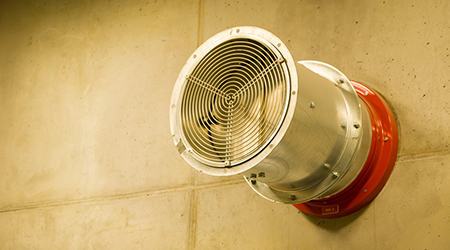Q: We have a new hospital building that is opening this month. For documentation on commissioning, the fire damper report just says the technician visibly watched the dampers close. Is there a protocol for the test required initially, first year and then every six years? Do the technicians doing the commissioning need to show training and/or be certified on fire damper testing?
A: No… the technician conducting the fire damper test is not required to be certified or demonstrate any particular training requirements. All they have to demonstrate is knowledge and ability, which is not defined in the NFPA standards. Therefore, the hospital can determine who is qualified based on an evaluation of their knowledge and ability, and documented in writing in their HR file.
You are correct… the dampers must be documented that they closed properly upon installation, then one year after installation, then every six years thereafter for a hospital (every four years thereafter for non-hospitals). A documented report must list the location of each damper, and the following information:
- Name of the individual performing the test
- Affiliation of the individual performing the test
- The signature of the individual performing the test
- The name of the test (i.e. installation test, one-year test, six-year test)
- The date in month/day/year format
- The frequency of the test
- The NFPA standard and edition used to conduct the test
- The results of the test such as ‘Pass’ or ‘Fail’ for each individual damper.
While many service companies provide pictures of the damper open and closed, NFPA does not require pictures to be taken.
Brad Keyes, CHSP, is the owner of KEYES Life Safety Compliance, and his expertise is in the management of the Life Safety Program, including the Environment of Care and Emergency Management programs.

 How Efficiency Checklists Help Hospitals Save Energy, Water and Money
How Efficiency Checklists Help Hospitals Save Energy, Water and Money Designing with Heart: Seen Health Center Blends Cultural Warmth and Clinical Care
Designing with Heart: Seen Health Center Blends Cultural Warmth and Clinical Care Rutgers Health and University Hospital Breaks Ground on Campus Expansion
Rutgers Health and University Hospital Breaks Ground on Campus Expansion What to Consider When Modernizing Healthcare Facilities
What to Consider When Modernizing Healthcare Facilities Corewell Health Beaumont Troy Hospital to Build New Tower
Corewell Health Beaumont Troy Hospital to Build New Tower